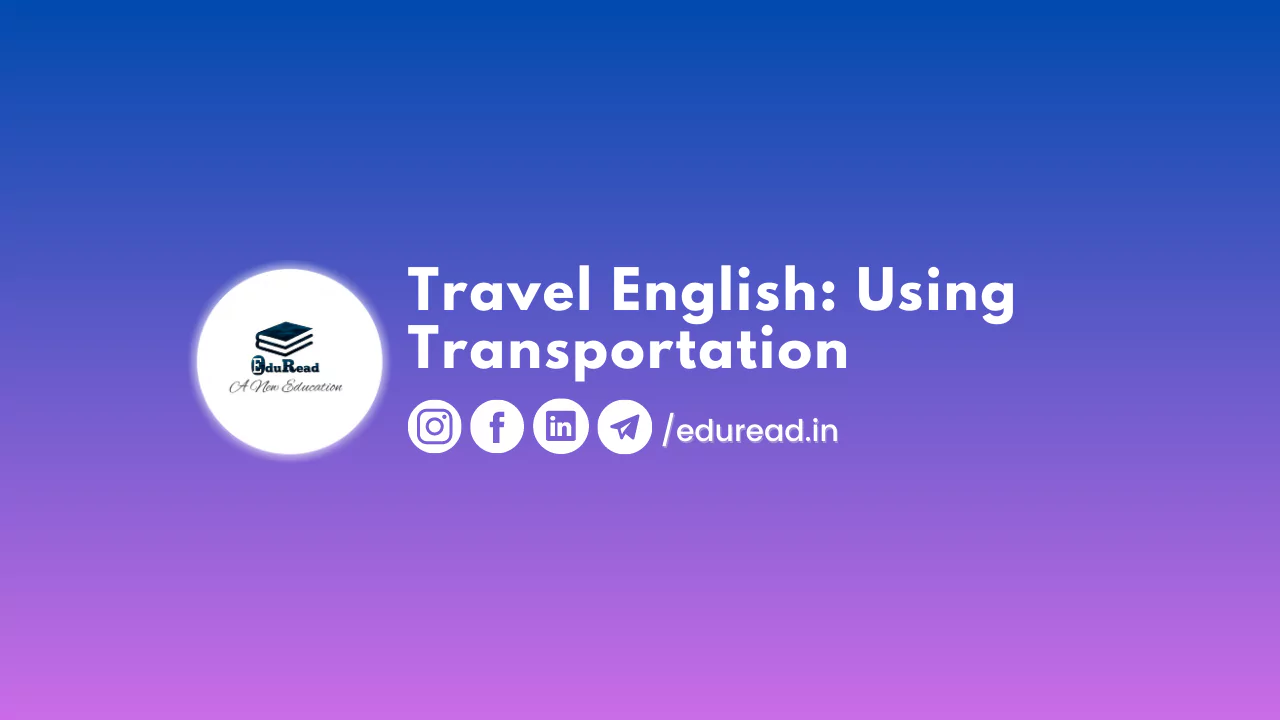Transportation is an essential part of traveling. Whether you are commuting to work or exploring a new city, it is crucial to know how to use different modes of transportation. In this blog, we will discuss various types of transportation and the English vocabulary you need to know to navigate them.
Types of Transportation
- Public Transportation- Public transportation is a cost–effective and eco-friendly way to get around. It includes buses, trains, subways, trams, and light rails. To use public transportation, you need to know the following vocabulary:
- Fare: The amount of money you pay to use public transportation.
- Ticket: A paper or electronic document that shows you have paid for the transportation.
- Platform: The area where you wait for the train or subway.
- Timetable: The schedule of when the transportation arrives and departs.
- Transfer: The process of changing from one transportation to another.
- Taxis and Ride-hailing Services- Taxis and ride-hailing services like Uber and Lyft are convenient ways to get around, especially when public transportation is not available. The following vocabulary will help you use these services:
- Meter: The device that measures the cost of the ride.
- Ride-share: Sharing a ride with others going in the same direction.
- Surge Pricing: Higher fares during peak hours or high demand.
- Pick-up Location: The place where the driver will pick you up.
- Drop-off Location: The place where the driver will drop you off.
- Car Rentals- Renting a car is a great way to explore a new place on your own terms. To rent a car, you need to know the following vocabulary:
- Rental Agreement: The contract that outlines the terms of the car rental.
- Insurance: The coverage that protects you and the car in case of an accident.
- Rental Rate: The amount of money you pay to rent the car.
- Fuel Policy: The policy that outlines who is responsible for refueling the car.
- Biking and Walking- Biking and walking are eco-friendly and healthy ways to get around. The following vocabulary will help you navigate these modes of transportation:Advertisement
- Bike Lane: The lane on the road designated for bikes.
- Pedestrian Crossing: The area where pedestrians can cross the road.
- Sidewalk: The path next to the road for pedestrians.
- Trail: A path for bikes and pedestrians.
Using Transportation Vocabulary
Now that you know the vocabulary for different types of transportation, it is essential to know how to use them in everyday situations. Here are some common situations you may encounter while using transportation:
- Buying a ticket for public transportations “Excuse me, how much is the fare for a one-way ticket?” “Can I buy a round-trip ticket, please?” “Is there a discount for students/seniors?”
- Asking for directions “Excuse me, where is the nearest subway station?” “How do I get to the bus stop?” “Can you tell me how to get to the airport, please?”
- Getting in a taxi or ride-hailing service “Can you take me to this address, please?” “How much will it cost to get to the train station?” “Can you turn up the air conditioning, please?”
- Renting a car “I would like to rent a car for three days, please.” “Do I need to return the car with a full tank of gas?” “Can I add an extra driver to the rental agreement?”
- Biking and walking “Excuse me, is there a bike rental shop nearby?” “Can you tell me how to get to the park on foot?” “Is it safe to bike/walk here?”
Conclusion
Transportation is an essential part of traveling.
Follow Us for more such content to improve your speaking skills:
To know more, check out here: https://eduread.in/travel-english-buying-tickets/
And visit us for more
.

